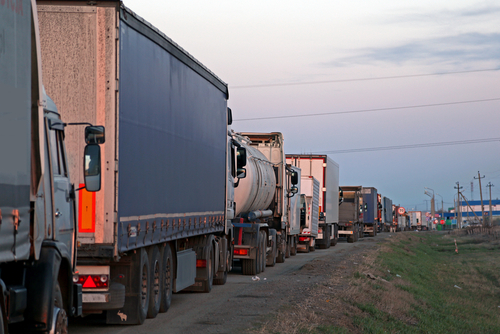
For the fifth year in a row, the intersection of I-95 and SR 4 in Fort Lee, N.J., is the most congested bottleneck for trucks, a new report from the American Transportation Research Institute (ATRI) found today.
The 2023 Top Truck Bottleneck List report looked at more than 300 locations along the national highway system and analyzed them based on freight truck GPS and other data to determine which locations have the most congestion. ATRI listed the top 100 congested locations, even though the organization said it tracks all 300 as a way to inform state and federal leaders on freight mobility initiatives.
“The past year-plus has shone a spotlight on our supply chains and how congestion and other pressures can hurt the American economy and consumers,” said American Trucking Associations President and CEO Chris Spear. “ATRI’s bottleneck report highlights the areas of our transportation network in need of investment so we can get goods and people moving. The cost of doing nothing is felt in needless delays, wasted fuel, and time.”
After the Fort Lee location, ATRI listed the intersection of I-294 at I-290/I-88 in Chicago, the intersection of I-45 at I-69/US 59 in Houston, and two intersections in Atlanta – I-2865 at I-85 (North) and I-20 at I-285 (West) in the top five most congested areas for trucks.
Rounding out the top 10 were: I-290 at I-90/I-94 in Chicago; SR 60 at SR 57 and I-710 at I-105 in Los Angeles; I-24/I-40 at I-440 (East) in Nashville; and I-10 at I-15 in San Bernardino, California.
ATRI said the data analysis found that traffic conditions continue to deteriorate as more Americans return to work post-pandemic. As a result, supply chain bottlenecks continue to occur. The average rush hour truck speed was 36.3 miles per hour, the report said, down more than 6 percent from 2021. Along the top five congested areas, the average rush hour truck speed was less than 30 miles per hour, the report said.